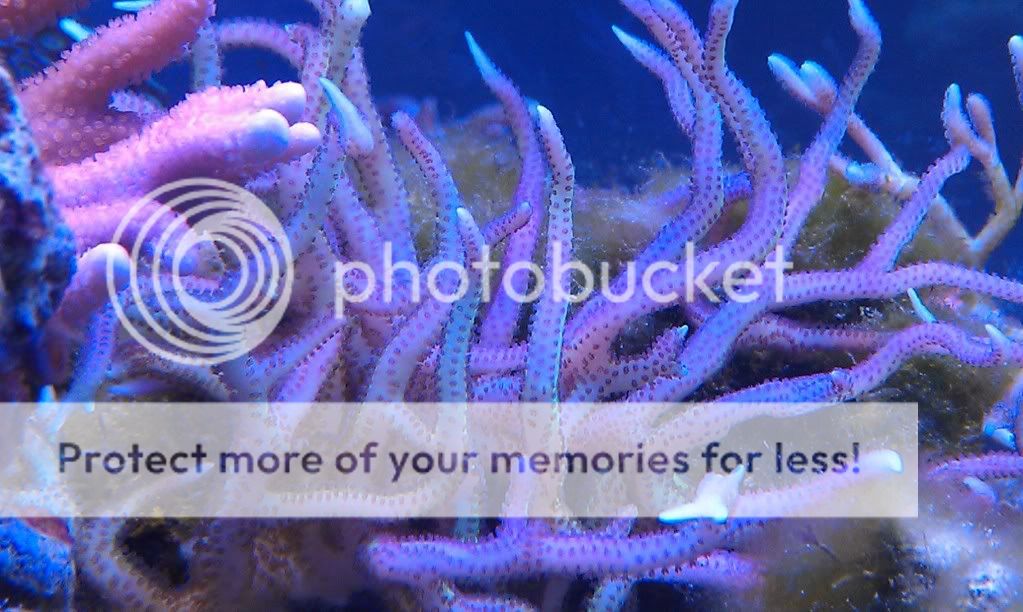animalkingdom
New member
Hello,
I have been keeping reef tanks for 2 years. Recently I have had an outbreak of an unusual algae. It looks like some kind of derbasia, but doesnt get long strands and grows close to the rocks like a mat. I keep mostly SPS an have always worked for low nutrients. currently (as of today) the tank tested Phosphate 0.00 Hanna Checker and Nitrate 0 Salifert. I grow macro algae (calupera) and carbon dose (vodka) for nutrient maintenance. I cant seem to figure why I am growing this algae on my rocks. Its only on high light areas. My initial thoughts are the super rough Marcos Rocks catches detritus causing pockets of high nutrients where algae gets a foothold and then algae catches its own detritus due to its nature of being mesh like. This allows more growth. I run pretty high flow in my 60gal 36 inch tank with an mp40 at 100% and a 1400gph korallia on intermittently random 10min or less on 2min or less off so I doubt the rock isn't getting enough flow, but detritus must be accumulating. Any thought on how to combat this stuff. Ive taken some rocks out and put in sump and even with lights out it lives for weeks. Would love some input.
Here is a pic of the algae

I have been keeping reef tanks for 2 years. Recently I have had an outbreak of an unusual algae. It looks like some kind of derbasia, but doesnt get long strands and grows close to the rocks like a mat. I keep mostly SPS an have always worked for low nutrients. currently (as of today) the tank tested Phosphate 0.00 Hanna Checker and Nitrate 0 Salifert. I grow macro algae (calupera) and carbon dose (vodka) for nutrient maintenance. I cant seem to figure why I am growing this algae on my rocks. Its only on high light areas. My initial thoughts are the super rough Marcos Rocks catches detritus causing pockets of high nutrients where algae gets a foothold and then algae catches its own detritus due to its nature of being mesh like. This allows more growth. I run pretty high flow in my 60gal 36 inch tank with an mp40 at 100% and a 1400gph korallia on intermittently random 10min or less on 2min or less off so I doubt the rock isn't getting enough flow, but detritus must be accumulating. Any thought on how to combat this stuff. Ive taken some rocks out and put in sump and even with lights out it lives for weeks. Would love some input.
Here is a pic of the algae



